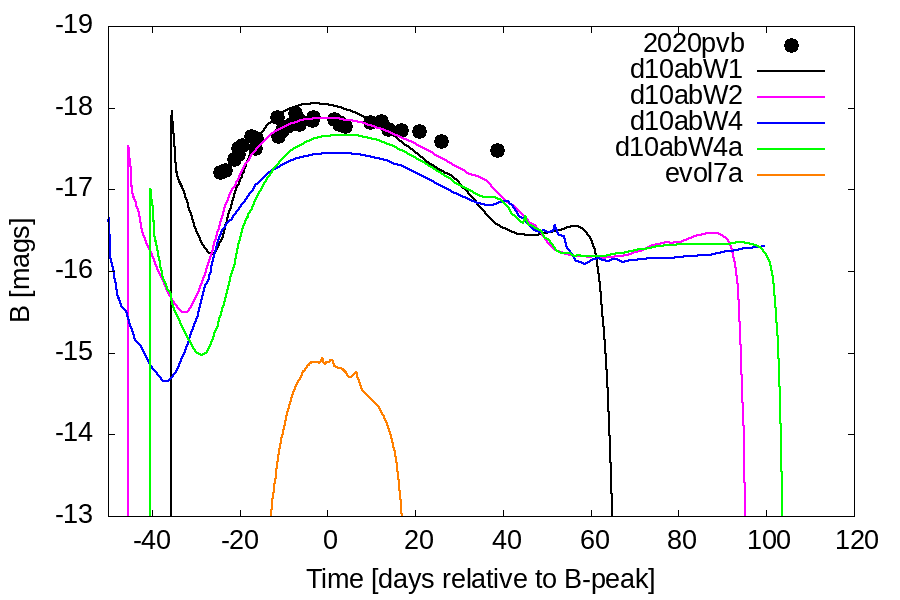

A. Kozyreva, P. Baklanov, S. Jones, G. Stockinger, H.-T. Janka
MNRAS 503, 797 (2021)
ADS,
arXiv eprint 2102.02575
| Stars in the mass range from 8 M⊙ to 10 M⊙ are expected to produce one of two types of supernovae (SNe), either electron-capture supernovae (ECSNe) or core-collapse supernovae (CCSNe), depending on their previous evolution. Either of the associated progenitors retain extended and massive hydrogen-rich envelopes and the observables of these SNe are, therefore, expected to be similar. In this study, we explore the differences in these two types of SNe. Specifically, we investigate three different progenitor models: a solar-metallicity ECSN progenitor with an initial mass of 8.8 M⊙, a zero-metallicity progenitor with 9.6 M⊙, and a solar-metallicity progenitor with 9 M⊙, carrying out radiative transfer simulations for these progenitors. We present the resulting light curves for these models. The models exhibit very low photospheric velocity variations of about 2000 km/s; therefore, this may serve as a convenient indicator of low-mass SNe. The ECSN has very unique light curves in broad-bands, especially the U band, and does not resemble any currently observed SN. This ECSN progenitor being part of a binary will lose its envelope for which reason the light curve becomes short and undetectable. The SN from the 9.6 M⊙ progenitor exhibits also quite an unusual light curve, explained by the absence of metals in the initial composition. The artificially iron-polluted 9.6 M⊙ model demonstrates light curves closer to normal SNe IIP. The SN from the 9 M⊙ progenitor remains the best candidate for so-called low-luminosity SNe IIP like SN 1999br and SN 2005cs. |

|
| ECSN model e8.8 | tt: broad bands | lbol |
| Low-mass zero-metallicity CCSN z9.6 | tt | lbol |
| Low-mass solar-metallicity CCSN s9.0 | tt | lbol |
(1) time [days] (2) Tbb [K] (3) Rbb [cm] (4) Teff [K] (7) Mbol (8) U (9) B (10) V (11) I (12)R
(1) time [days] (2) UBVRI-pseidobolometric [erg/s] (3) bolometric [erg/s] (4) X-ray-EUV <325Å (5) IR >890Å Luminosities are in log10-scale.
SN 2020pvb: a Type IIn-P supernova with a precursor outburstElias-Rosa, N. et. al.
In this paper, we used the model e8.8, i.e. exploded ECSN model, which we
modified in the following way. The density profile was scaled with a factor of 10 to have the ejecta with
the mass of 0.4 solar masses. The exploded ECSN model at day 10 after the explosion was surrounded with a
circumstellar material.
| 
|
Please contact Sasha Kozyreva via sasha.kozyreva gmail.com for any details, if needed.